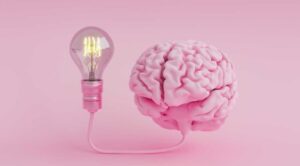Neuroscience (Brain Studies) has developed at an incremental pace in recent years. This filed of science sheds light on the complex mental and emotional processes of the brain.In the last 20 years, thousands of studies conducted in normal healthy individuals have created an important know how about the biological mechanisms underlying the attention, perception, learning, emotional arousal and decision-making processes (cognition) of the brain.Neuroeconomics and neuromarketing are examples to the areas among which the application areas of know how develop.
Neuromarketing is a brain-based research method that uses techniques in neuroscience to understand the human brain’s response to the presented stimuli. Its main purpose is to better understand and predict the unconscious behaviour of consumers.
In the field of Neuromarketing, Event-Related Potentials realized with Electroencephalogram (EEG, cerebral electrical activity) and functional Magnetic Resonance Imaging (fMRI, cerebral circulation), and online, individualised mood measurements and eye movement tracking methods have significant advantages over conventional research methods.People’s explicit discourses do not provide results with sufficient reliability due to differences in the capacity of individuals in expressing their mental processes. However, neuroscientific measurements are unaffected by such external impacts.Studies with high validity and reliability can be designed.When it comes to big conceptual steps such as developing a new marketing strategy, they provide highly reliable data that are thoroughly tested.Therefore, they offer a new scientific framework for understanding consumer behaviour and the causes behind it.
Indispensable Elements of a Correct Neuromarketing Study
- Measurements should be carried out with the seriousness and discipline of science.
- Neuromarketing studies should be carried out by neuroscientists and an experienced qualitative team.
- Every study should be unique.
- The study should be conducted based on hypotheses.
- A special research design should be prepared for each study.
- Artificial intelligence should not be used in the studies, and the project should be carried out with real participants.
- In EEG measurements, devices with high medical standards should be used. Devices that measure EEG signals with inexpensive circuits and that can be easily used by any user should not be used.
- Methods must have a 95% and higher reliability rate.
- The findings should not be open to estimation and interpretation. Findings should be presented with statistical significance within the limits of scientific precision.





